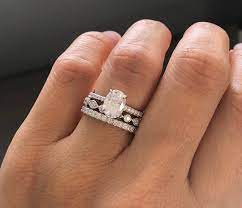Lines and Wrinkles? Here’s the Secret Dermatologists Wish You Knew
As you get older, your skin makes less collagen and elastin. These are proteins that keep skin strong and stretchy. Your skin also gets new cells more slowly. It holds less water too. This leads to thin, dry skin where line and wrinkles show up more easily.

Introduction: The Truth Behind Your Skin's Story
We all know that moment. You look in a mirror under bright light. You see a line that wasn't there before. Maybe it's a crease between your brows. Or maybe it's fine lines at the corners of your eyes. These changes can make you feel many things. You might feel upset or want to fix them right away.
But here's what skin doctors wish you knew from the start. Dealing with lines and wrinkles isn't about erasing your life story. It's about taking care of your skin. It's about making smart choices that work with your body.
Summary
You don't need pricey miracle creams to fight wrinkles. You need to know how skin works. Use a daily sun block. Keep your skin moist. Try proven ingredients like retinoids. Take care of your overall health. These simple steps can keep your skin healthy at any age. You can avoid wasting money on products that don't work. With the right plan, your skin can stay fresh and strong.
Understanding Your Skin: The Biology Behind Aging
Skin aging isn't just about the passing years. It's a complex process that happens both inside and outside your body. Understanding how lines and wrinkles form helps you make better choices about skin care.
Let's learn what happens when lines and wrinkles appear on your skin. This will help you spot false claims in product ads.
Why Does Skin Age Anyway?
Your skin ages in two main ways. The first way is natural aging from your genes. The second way comes from outside things like sun and pollution.
As you get older, your skin makes less collagen and elastin. These are proteins that keep skin strong and stretchy. Your skin also gets new cells more slowly. It holds less water too. This leads to thin, dry skin where line and wrinkles show up more easily.
The Different Types of Lines and Wrinkles
Not all wrinkles are the same. Knowing the types helps you treat them better:
Moving wrinkles: These show up when you make faces. At first, they go away when your face relaxes. Later, they can become permanent.
Still wrinkles: You can see these even when your face is not moving. They often come from sun damage or smoking.
Gravity folds: When skin loses bounce and fullness, it sags down. This creates folds.
Sleep lines: These form from pressing on your face during sleep. They often show up as slanted lines on cheeks and chin.
The Secret Dermatologists Don't Tell You (Because You're Not Asking)
Most people only visit skin doctors after lines and wrinkles have already appeared. By then, many treatment options are less effective than they could have been. Your skin doctor wants you to know that timing matters more than you think when dealing with lines and wrinkles.
Prevention is 80% of the Battle
Skin doctors get upset when people wait until after skin damage. The truth is, stopping damage works better than fixing it later. Here's what skin doctors wish you knew sooner:
Sun protection is a must, not a choice. Up to 90% of skin aging comes from the sun. Using SPF 30+ every day is the best anti-aging step.
Being regular beats being fancy. A simple routine you use every day works better than pricey products used sometimes.
Starting early helps a lot. Small changes in your 20s and 30s are easier to fix. Don't wait for big problems to show up.
The Evidence-Based Approach to Managing Lines and Wrinkles
Not all advice about lines and wrinkles is created equal. Some methods have years of research behind them, while others are just marketing hype. Skin doctors focus on treatments for lines and wrinkles that have real science to back them up.
The Non-Negotiable: Sun Protection
Sun rays speed up skin aging. They break down collagen and harm skin cells. Here's what skin doctors suggest:
Use SPF 30+ every day, even when cloudy or in winter
Put on more sunscreen every two hours outside
Wear hats, sunglasses, and sun-safe clothes
Find shade during peak sun hours (10am-4pm)
This helps prevent both wrinkles and skin cancer. Make sunscreen a daily habit like brushing teeth.
Hydration: Internal and External
Good hydration plumps up skin cells. This makes fine lines less visible. It helps stop new ones too. Try both these ways:
Internal hydration: Drink plenty of water all day long. Eat watery foods like cucumbers and berries. Cut back on alcohol and coffee.
External hydration: Use products with hyaluronic acid to pull in moisture. Seal in moisture with creams. Try overnight masks for extra moisture.
The Power Players: Active Ingredients Worth Your Money
Many products claim to fight lines and wrinkles. But which ones really work? Skin doctors recommend these proven options for treating lines and wrinkles:
Retinoids: The Gold Standard
Retinoids (from vitamin A) are the most studied wrinkle fighters. They work by making new skin cells faster. They help your skin make more collagen. They fade dark spots. They make skin smoother.
Start with over-the-counter retinol at low strength (0.25-0.5%). Slowly use stronger ones as your skin gets used to it. Use at night. Sunlight makes retinoids stop working.
Antioxidants: Your Daily Defense
While retinoids fix damage, antioxidants prevent it. They fight harmful molecules from sun and pollution. Look for vitamin C that brightens skin and protects from sun damage. Look for vitamin E that works well with vitamin C. Try niacinamide that strengthens skin and reduces redness. Plant extracts like green tea can calm the skin.
For best results, use antioxidants in the morning under sunscreen.
Peptides: The Communicators
Peptides are small protein pieces. They tell your skin to do things like make collagen. They're gentler than retinoids. Good for sensitive skin. Different types do different jobs. Some tell skin to make collagen and elastin. Some carry minerals needed for healing. Some relax facial muscles for a while.
The Professional Treatments: When and Why to Try Them
When home care for lines and wrinkles isn't enough, office treatments can work better. Here's what skin doctors often suggest for deeper lines and wrinkles:
Starter Treatments for Early Aging Signs
Chemical peels remove top skin layers to improve look and speed up renewal. Microdermabrasion scrubs off dead skin cells to boost blood flow. Microneedling makes tiny holes that get your skin to make collagen.
Middle-Level Options for More Noticeable Lines
Botox injections relax muscles that cause wrinkles when you move. Dermal fillers add volume to fill in lines and wrinkles. Laser treatments remove damaged skin and boost collagen.
Advanced Choices for Major Aging Issues
Radiofrequency tightens skin using heat to boost collagen. Ultrasound therapy reaches deep skin layers to lift and tighten. Thread lifts are a less invasive option than full face lift.
Lifestyle Factors: How Your Daily Habits Affect Skin Aging
Your daily choices impact how lines and wrinkles develop more than most expensive creams. How you sleep, what you eat, and how you handle stress all show up as lines and wrinkles on your face. These factors often get less attention than they deserve.
Sleep Quality and Skin Repair
During deep sleep, your body makes growth hormone. This helps fix your skin. Bad sleep speeds up aging. It raises stress hormones that break down collagen. Try to get 7-9 hours of good sleep.
How you sleep matters too. Sleeping on your side makes wrinkles over time. Try to sleep on your back. Or use a silk pillowcase to help prevent sleep lines.
Nutrition for Skin Strength
What you eat affects how your skin looks and feels. Focus on omega-3 fats found in fish, flax seeds, and walnuts. They help skin cells stay strong. Eat colorful fruits and veggies that give your skin things that fight damage. Get enough protein to give your body building blocks for collagen. Choose foods high in vitamin C to help your body make collagen.
Stress Management and Skin Health
Ongoing stress speeds up aging. It makes more cortisol in your body. This breaks down collagen and causes redness. Try stress-fighting activities like yoga or walking. These help both your skin and your overall health.
The Skincare Routine Framework: Simple and Science-Based
Good skin care to fight lines and wrinkles doesn't need to be complex. A simple routine based on science can deliver better results than expensive systems. The key is consistency and using products that target lines and wrinkles in the right order.
Morning Routine: Protect and Defend
Gentle face wash. Antioxidant serum. Moisturizer to add water. Sunscreen (SPF 30+).
Evening Routine: Repair and Restore
Good cleansing (wash twice if wearing makeup). Treatment product (retinoid, peptides, or fruit acids). Hydrating serum. Moisturizer.
Weekly Additions: Boost and Enhance
Gentle scrub (1-2 times weekly). Hydrating mask. Face massage with tools.
Common Myths and Misconceptions About Lines and Wrinkles
The beauty industry thrives on myths about lines and wrinkles that keep us buying new products. Many common beliefs about lines and wrinkles simply aren't true. Learning to spot these myths can save you money and disappointment.
Myth: You Need Expensive Products to See Results
Truth: What works depends on the active ingredients, not the price. Many good products cost less at drugstores.
Myth: Natural Products Are Always Better and Safer
Truth: "Natural" isn't a regulated word. Some natural things can cause rashes or allergies. Look for ingredients proven by science instead.
Myth: You Can Permanently Erase Wrinkles
Truth: No treatment gets rid of wrinkles forever. You must keep up with care. Having real hopes leads to better happiness with results.
Myth: You're Too Young to Worry About Anti-Aging
Truth: Preventing damage in your 20s and 30s works better than fixing it later. Start using sunscreen and basic skin care early.
Tips for Different Skin Types and Concerns
Not all skin responds to lines and wrinkles treatments the same way. Your skin type and specific concerns should guide your approach to fighting lines and wrinkles. What works for someone else's lines and wrinkles might not work for yours.
Sensitive Skin and Anti-Aging
If you have sensitive skin, add new products slowly. Try gentler options like bakuchiol instead of retinol. Or use lower strengths of active ingredients. Always test new products on a small skin area first.
Fighting Dark Spots Along With Wrinkles
Dark spots often come with wrinkles. This happens more in darker skin tones. Use ingredients like vitamin C and niacinamide. These help with both dark spots and wrinkles.
Acne-Prone Skin and Anti-Aging Concerns
Many worry anti-aging products will cause pimples. Look for products labeled "won't clog pores." Try ingredients like retinoids. They help with both acne and aging signs.
When to See a Skin Doctor
Sometimes over-the-counter products aren't enough for persistent lines and wrinkles. A professional can offer treatments that work faster on stubborn lines and wrinkles. Knowing when to seek expert help for your lines and wrinkles can save you time and frustration.
Going to a skin doctor is worth it when:
Store products aren't helping you
You don't know which products to try
You have other skin problems like rosacea or bad acne
You want to try office treatments and need advice
A skin doctor can give you personal advice based on your skin type and budget.
Conclusion: The Balanced Approach to Lines and Wrinkles
Lines and wrinkles are part of life. But you can control how they form and when they show up. The big secret skin doctors wish you knew? Managing lines and wrinkles isn't about looking 25 forever. It's about keeping your skin healthy. It's about using what science shows works for lines and wrinkles. And it's about being steady with your care routine.
Remember that your skin is unique. What works for others' lines and wrinkles might not work for you. Be patient with your skin care plan. Be happy about small wins. Don't chase perfect skin. Know that healthy skin looks good at any age.
Use sunscreen every day to prevent new lines and wrinkles. Keep your skin well hydrated to minimize the appearance of fine lines. Choose products with proven ingredients that target specific types of lines and wrinkles. Live a healthy life. These steps will keep your skin looking fresh for years. You won't need to waste money on "miracle" creams that don't work.
Your skin tells your life story. The goal isn't to erase every line and wrinkle. The goal is to look like the healthy, cared-for person you are at any age.
What's Your Reaction?




















